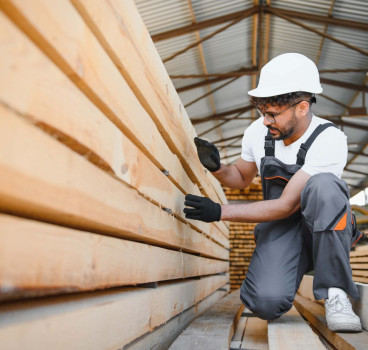Why are we still building new homes on flood plains?
The recent news that over 7,000 new homes have been approved for construction in high-risk flood zones in England is a stark reminder of the ongoing challenges posed by climate change and unsustainable development practices. While the need for housing is undeniable, building on floodplains seems to me, a short-sighted and dangerous approach that will have long-lasting consequences, writes John Ridgeway.
I believe that the decision to grant planning permission for homes in flood-prone areas is a gamble with significant risks. When these homes are inundated, the consequences can be and are devastating. Residents face displacement, property damage and emotional distress. The wider community then has to bear the burden of emergency response, infrastructure repairs and increased insurance premiums.
There is a very good reason why we have not built on flood plains in the past – and you do not have to be a genius to work out why. Moreover, building on floodplains can exacerbate flooding risks. By obstructing natural floodplains, new developments can increase water levels and increase flooding downstream. This can put entire communities at risk, particularly those located in low-lying areas.
The fact that planning permission has been granted for so many homes in flood zones despite expert warnings is a clear indication of a systemic failure. I would suggest that the government's approach to flood risk management has been inadequate, prioritising short-term economic gains over long-term sustainability – so what should we do, to put this right?
It is imperative that the government takes decisive action to address this issue. The Environment Agency must be empowered to enforce planning regulations and ensure that flood defences are maintained. The Flood Resilience Taskforce should also be given the resources and authority to review and reform the planning system to prioritise flood resilience.
A need for change
More importantly, the time has come for a fundamental shift in our approach to development. We must ensure that we are building in areas that are less susceptible to flooding and are investing in more flood defences and sustainable drainage systems. While it may be tempting to exploit undeveloped land, the long-term costs of building in floodplains far outweigh any short-term gains.
The issue of building on floodplains is becoming increasingly urgent due to the changing climate and rising sea levels. Extreme weather events, such as heavy rainfall and storms, are becoming more frequent and intense, increasing the risks.
We know that flooding can have devastating economic consequences. When homes and businesses are damaged or destroyed, it can lead to job losses, business disruption and increased insurance premiums. In addition, the cost of repairing infrastructure and cleaning up after floods can be enormous.
Flooding can also have a significant impact, as already mentioned, on people's lives. Displaced residents may experience emotional distress, financial hardship and health problems. In extreme cases, flooding can even lead to loss of life – so what is going on?
The decision to grant planning permission for development in floodplains is a complex one. While there is a need for new housing, it is essential to balance this with the risks of flooding. By carefully considering the potential impacts of development on flood risk, planners can help to protect communities and minimise the negative consequences.
By adopting a more resilient approach to development, we can protect communities from the devastating impacts of flooding and create a more sustainable future. It is time for the government to take a stand and ensure that new homes are built in safer and more resilient locations.
This is, of course, an opinion on my part, but the decision to grant planning permission for thousands of homes in flood zones is a short-sighted and dangerous approach. The risks of building on floodplains far outweigh any potential benefits and the government must take decisive action to address this issue. By prioritising flood resilience and sustainable development, we can protect communities from the devastating impacts of climate change and still build the houses we need – and it cannot come too soon.

Additional Blogs

What if Building Control went fully digital?
Building control governs structural integrity, fire protection, energy efficiency, accessibility and countless other aspects of design and construction. Historically, this process has been highly...
Read moreWhere most “Smart Buildings” go wrong
Smart buildings are often presented as the ultimate in modern construction - interconnected, efficient, intuitive and driven by real-time data. They promise lower operating costs, reduced energy use,...
Read more

The future of facilities management starts at RIBA Stage 0
Facilities management has traditionally been treated as a discipline that only becomes relevant once a building is handed over. At that point, FM professionals inherit decisions made months or years...
Read more